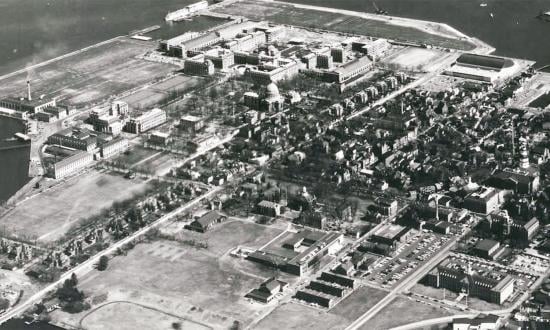Admiral Hayward died 3 March 2022 at the age of 97. As Chief of Naval Operations (CNO) from 1978 to 1982, he proactively changed the service’s culture regarding illegal drugs. (See “Where Do We Get Such Men?: Thomas B. Hayward,” August, p. 61.) Following is an edited excerpt from a Naval Institute oral history interview conducted by Paul Stillwell on 8 June 2002.
The drug problem surfaced across the nation in the late ’60s and was enhanced because of Vietnam. The Navy didn’t seem to have as much use of drugs as the land forces did, or access to them. But by the late 1970s, when I was CinCPacFlt, the problem was clearly there. Sailors were reportedly taking LSD and marijuana aboard ship and hiding them. We resorted to the use of dogs to try to find drugs, because it was that serious a problem. It was increasingly difficult on our leadership and morale.
There was a black reporter, a former Navy man, on The San Diego Union who cornered me on one of my trips to San Diego. He said, “You just don’t know what’s going on in your fleet. You’ve got a problem that is monumental, and you’re just turning your back on it. I retorted, “I’m spending a lot of time on it. We’re really working at it. I don’t believe you’re right. Give me evidence of it.”
Well, when I got to be CNO, he continued to be a thorn in my side. By then I also was concerned enough that we began working with the medical department and the Chief of Personnel and the Master Chief Petty Officer of the Navy’s organization, trying to understand what really was going on. The general answer was that the way you solve the drug problem is through education. So we made movies and got experts and created training programs.
My view at the time—and it proved to be right—was that the kids don’t pay any attention to what the “system” churns out.
I don’t remember the occasion why this black reporter got to me, but he made a lasting impression. So I finally called the Vice Chief of Naval Operations into my office and said, “Okay, I want you to hire one of these big audit firms, and I want to get to ground truth. Do we have a drug problem or not? I don’t want some 1,500 people interviewed and get a plus or minus 3 percent accuracy. I want at least 50,000 minimum; both coasts, all types. Come back with some real statistics.”
Well, the results were stunning. Forty-eight percent of the sailors—in both fleets, no matter where they were—were on some drugs some of the time. They were using drugs underway, using drugs on watch. Big problem! That got my attention. That got my attention. So after that we got everybody we could into finding a solution. Surely fortuitously—it had nothing to do with anybody’s good judgment or leadership—at that particular time, we got a tremendous break. We got to the point where we could hold a urinalysis and get reliable enough results that would minimize the false results and thereby minimize court challenges and all of that.
So the Marine Commandant and I put together a policy on how we would do this. The policy, fundamentally, was pretty close to “zero tolerance.” I don’t recall how the Commandant handled it, but here’s the way I handled it in the Navy: I would give six months’ notice—or maybe it was four months—to the whole Navy that, “If you’re on drugs now, you better get off. If you turn yourself in now, in order to break the habit, we’ll provide you all the support possible, and it will not affect your career at all. But get off drugs now!”
This was forewarning. The policy would then go into effect. For any officer we caught—urinalysis was the primary way—“Your career is over, you’re out of the Navy, we don’t need you.” With chief petty officers, “We’ll give you one chance. And first class and below, we’ll give you two chances.”
Then the chiefs did something absolutely remarkable. The Master Chief of the Navy came to me and said, “Admiral, the chief petty officers want me to ask you to treat us just like officers. No second chances.” Golly, with that expression of support, I knew we were on the right course. Then I did a video that projected this kind of message: “Not in my squadron, not on my ship, not in my Navy.”
The whole idea was based on reversing peer pressure 180 degrees. The chain of command made it loud and clear: “If you’re going to be in this outfit, knock it off.” The video was delivered to everybody through the chain of command. It said, essentially, “We’re not going to tolerate this. And if you test us, you’re going to find you’re in deep trouble.”
The triggering event was the conjunction of this survey and the urinalysis. We could finally do something about it. We could really catch people. Drug use declined so fast you couldn’t believe it—just an immediate turnaround.







